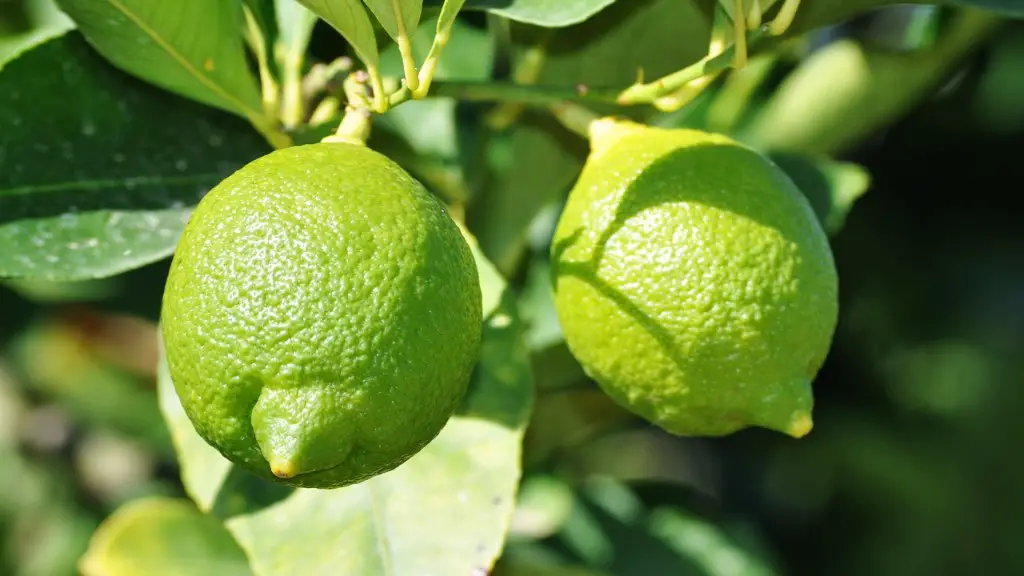Steps to Transplanting an Avocado Tree From a Pot to the Ground
Transplanting an avocado tree can be complicated and requires careful planning before taking any action. The process should be done with patience as avocado trees are fairly delicate and require special attention to take root in the ground. Thus, avocado trees must be carefully removed from their pot, prepped in their new place, and then carefully planted in the ground. The steps below can provide a guide to transplanting an avocado tree from a pot to the ground.
1. Choose the Location
Perhaps the most essential step in transplanting an avocado tree from a pot to the ground is choosing the right location for the tree. This is because avocado trees need sunlight, space, and well-draining, nutrient-rich soil to remain healthy. Thus, the spot for the tree should be chosen carefully to ensure the tree secures enough sunlight daily, with at least 10 square feet of ground available for growth, and a well-draining spot with healthy soil. As advised by horticulture experts, avocado trees should never be planted in soggy soil, as this can cause root rot and other health issues with the tree.
2. Digging the Hole
Once the spot is selected, it will be time to dig the hole for the tree. This should be done with care and extreme caution, to avoid damaging the roots of the tree. The hole should be twice as wide and two times as deep as the root ball which is the rolled up root system and mass of soil that forms the base of the tree after it is removed from the pot. The bottom of the hole should be covered with a couple inches of soil to provide a base for the tree.
3. Removing Avocado Tree from the Pot
Avocado trees are delicate and must be handled with proper care when removed from the pot. Securely hold the pot in one hand and gently move the base of the tree with the other hand to ensure the tree is free from the pot. Once it is free, the root system of the tree should look like a root ball and should be handled with extreme caution, as even the slightest of movements can cause the tree to become uprooted.
4. Placing the Tree in the Hole
Once the tree is removed from the pot, it can be placed in the hole. This step should also be performed with great care and delicacy, as certain parts of the root system could be damaged if not handled with care. When placing the tree into the hole, the root ball should be placed in the center and the soil should be positioned around it. Refill the hole with soil and tamp it gently to make sure the soil is secure.
5. Watering the Tree
Avocado trees must be watered during the transplanting process, but overwatering should be avoided. When watering the tree, ensure that the soil is moist but not wet. The watering process should usually be done in the morning, as this ensures that the water has time to absorb into the ground and provides the nutrients the tree needs throughout the day.
6. Pruning the Tree
To encourage healthy growth and enhance the physical structure of the tree, pruning is necessary. Pruning should be done to remove any dead branches and to shape the tree. When pruning the tree, make sure to avoid cutting into the main trunk as this could stunt the growth of the tree.
7. Fertilizing the Tree
The growing avocado tree needs a good supply of nutrients to remain healthy and regular fertilization can provide that. Using a fertilizer specifically designed for fruit trees is essential. A nitrogen fertilizer should be used at the beginning of the season and a slow-release fertilizer can be used for the remainder of the growing season.
Securing the Tree
Once the tree is transplanted, it is important to ensure it is secure in the ground. To accomplish this, a stake should be installed near the trunk of the tree. The stake should be secured to the trunk of the tree with a wide, soft strap, which will protect the bark from damage while still holding the tree in place. Additionally, a layer of mulch should be spread around the tree. This will help the tree stay hydrated, will protect the roots from extreme temperatures, will aerate the soil for better growth, and will also keep weeds at bay.
Safeguarding the Tree
It’s important to watch for signs that the avocado tree is not doing well, such as signs of pests, signs of diseases, lack of nutrients, etc. In this case, it may be wiser to contact a specialist and get their advice on how to best help the tree. Additionally, it’s important to avoid over-watering and over-fertilizing, as this can cause damage to the tree.
Benefits of Transplanting
Transplanting an avocado tree brings many benefits that can help the tree grow healthy and strong. When the tree grows in the ground and has access to sunlight and the right amount of nutrients, the tree can better defend itself against pests and diseases, as well as provide more fruits. Additionally, when transplanted correctly, an avocado tree can have a much longer lifespan.
Conclusion
Transplanting an avocado tree from a pot to the ground can be a difficult process, but with the steps provided, it is possible to successfully transplant the tree without much hassle. Nevertheless, it’s important to remember to always go slowly and carefully when transplanting an avocado tree, as this will help ensure the tree gets off to a strong start.
Fertilizing the Tree to Encourage Growth
Fertilizing the avocado tree after it has been transplanted is essential for its healthy growth. Fertilizers such as nitrogen, phosphorus, and potassium are important to provide necessary nutrients, and a slow-release fertilizer should be used. The tree should be fertilized in spring and mid-summer. Additionally, it’s important to remember to fertilize around the edge of the roots, not too close to the trunk, as this could damage the roots.
Caring for the Tree During Winter Months
The winter months can be damaging to avocado trees, and proper care is essential for the tree’s health. During the winter months, be sure to insulate the roots and trunk of the tree with mulch, and water the tree only when dry weather persists. Additionally, it’s important not to prune the tree during the winter months as this could damage the tree further.
Keeping Weeds and Pests Away
Weeds and pests can be troublesome for avocado trees, and can cause damage to the tree and impede its growth. To prevent this, it is important to keep an eye on the tree and remove any weeds that start to grow around it. Additionally, pesticides and other weed killers can be used to prevent weeds from taking over the soil. Pruning out dead branches can help keep pests away and using neem oil can help to eliminate any pests that become a problem.
Protecting the Tree from Animals
Animals such as squirrels, cats, and birds can be a nuisance to the tree, and can cause damage if left to their own devices. To keep animals away from the tree, it’s important to install a fence around the tree. If a fence is not an option, then motion-activated sprinklers can be used to deter animals from getting too close to the tree.

